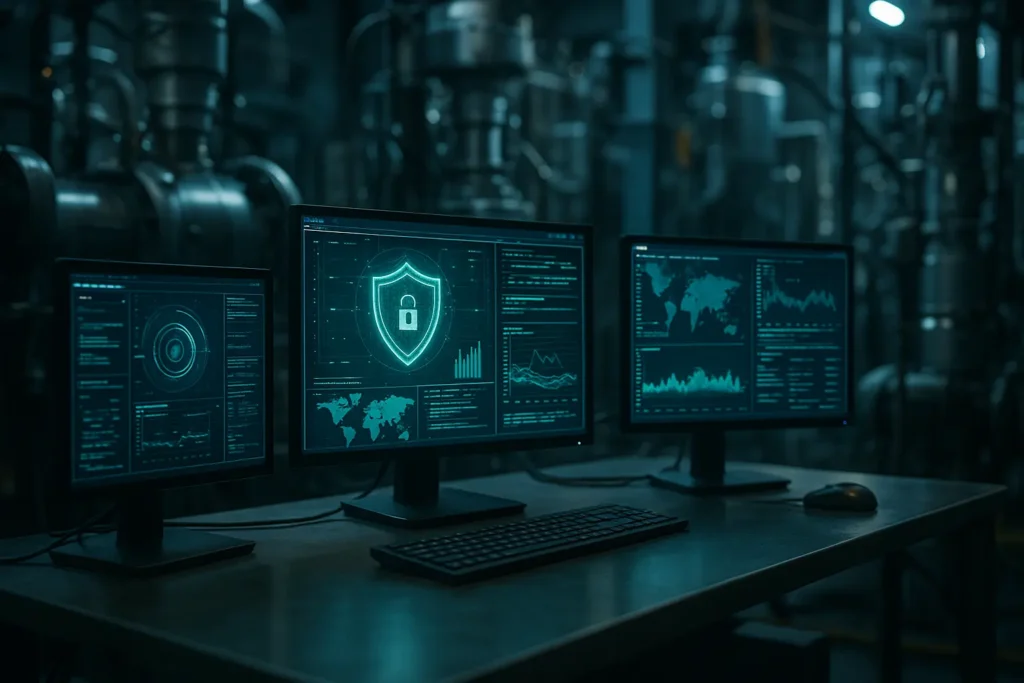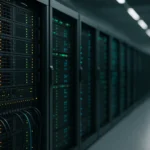In the era where technology is the backbone of our business operations, cybersecurity emerges as more than just a buzzword—it’s a critical element of our industrial systems. As we stand at the crossroads of a technological revolution, the industrial world faces unprecedented cyber threats. The looming question is, how do we protect our industries from these invisible yet potent enemies?
The traditional tale of the lone hacker infiltrating a system has expanded into an intricate dance of threats and defenses. As we unlock the future, let’s delve into how cybersecurity is dynamically evolving in our industrial realms, what risks we face, and how we can build a fortress of security around our data.
Understanding the Industrial Landscape of Cybersecurity
In recent years, the industrial sector has transformed, embracing digital interconnectivity like never before. However, with this technological shift comes an increase in vulnerabilities. Our manufacturers face complex cyber challenges as hackers become more sophisticated and target these valuable assets.
With industrial processes increasingly dependent on interconnected systems, the stakes have never been higher. Data breaches in this sector can result in catastrophic risks, ranging from financial losses to operational shutdowns. As adept custodians of this digital age, we must champion new security measures and employ them diligently.
The cyber landscape is fraught with unique threats. Unlike other business domains, the manufacturing industry juggles challenges such as intellectual property theft, espionage, and attacks on industrial control systems. Our organization must remain vigilant, understanding that a lack of security can damage not just our operations but our reputation and trust as well.
The Evolution of Cyber Threats in Manufacturing
Manufacturing was once seen as an unlikely target for cyber criminals, but today, it is a prime focus, primarily due to its evolving trust in automation and data-driven technologies. The digitalization of industrial processes invites a variety of threats that can interrupt operations and compromise sensitive data.
Today’s cyber attacks may come from various fronts. Hackers can exploit vulnerabilities in IoT devices, manipulate systems, and even hold entire businesses hostage. Ransomware is on the rise, threatening to halt production lines and demand payouts for the restoration of data.
The essence of cybersecurity in manufacturing lies in understanding the risk landscape. As technology advances, the threats we face do too. We must remain adaptable, adopting comprehensive security frameworks and fostering a culture of awareness within our organizations. Let’s outsmart these adversaries by understanding and anticipating their moves.
Innovations in Industrial Cybersecurity Strategy
The digital age demands a fresh approach to security strategies in industrial settings. To outpace cyber adversaries, we must integrate cutting-edge technologies and solutions tailored to the distinct needs of industrial systems.
First and foremost, a robust security strategy begins with a proactive stance. Identifying potential vulnerabilities before they can be exploited is crucial. Techniques like risk assessment, regular system audits, and penetration testing can help predict and mitigate threats.
Next, we must embrace technology that enhances security. Advanced encryption methods, AI-driven security solutions, and blockchain for data integrity are revolutionizing how we protect our manufacturing environments.
Moreover, investing in human capacity by training employees and fostering a security-aware culture can drastically reduce the risk of human errors leading to cyber incidents. Let’s build defenses that are as innovative as the technology we wish to protect.
Partnering for a Secure Future: Collaborations and Regulations
As we battle an evolving cyber landscape, collaboration emerges as a powerful tool against cyber threats. Working closely with industry peers, governmental bodies, and technology providers can lead to shared intelligence, robust standards, and effective regulations.
Industry alliances can foster a community of shared knowledge where best practices in cybersecurity are exchanged, leading to more resilient systems. Moreover, as governments worldwide recognize the need for stringent security measures, regulatory frameworks are being established to ensure compliance and elevate security standards.
For us, success lies in strategic partnerships—leveraging the expertise of cybersecurity firms, engaging in policy advocacy, and keeping pace with regulatory changes. Together, we can forge a secure path for our industrial future, where innovation thrives without fear of cyber intrusion.
As we navigate the cyber seas of the industrial world, we understand that cybersecurity is not just a destination—it’s an ongoing journey. Our businesses must continuously adapt, innovate, and collaborate to stay ahead of threats.
The risks are real, and the stakes are high, but by embracing a future-driven approach, we can safeguard our data and protect our most valuable assets. Let’s commit to a safer tomorrow, where industrial processes and technology flourish hand in hand, shielded by the best cyber practices we can muster. Together, we stand resilient, ready to face the challenges of the cyber age.
FAQ
What is driving the evolution of cybersecurity in the industrial sector?
The evolution of cybersecurity in the industrial world is driven by the increasing integration of digital technologies, the rise of the Internet of Things (IoT), and the growing sophistication of cyber threats. These changes necessitate enhanced security measures to protect critical infrastructure and sensitive data.
How has the integration of IoT devices impacted industrial cybersecurity?
The integration of IoT devices has expanded the attack surface for cyber threats, making industrial systems more vulnerable. However, it also provides opportunities for real-time monitoring and advanced threat detection, allowing for quicker response to potential security breaches.
What are some common cybersecurity challenges faced by industrial enterprises?
Industrial enterprises often face challenges such as outdated legacy systems, lack of cybersecurity expertise, and insufficient security protocols for newer technologies. These issues can lead to vulnerabilities that are susceptible to cyberattacks.
How are companies addressing the need for improved cybersecurity in industrial settings?
Companies are addressing cybersecurity needs by investing in advanced security technologies, implementing comprehensive security policies, and continuously training employees on best practices. Collaboration with cybersecurity experts and sharing threat intelligence also play crucial roles in enhancing security.
What role does government regulation play in strengthening industrial cybersecurity?
Government regulations establish baseline security standards and guidelines that organizations must follow to protect their systems. These regulations encourage industries to adopt robust security measures and promote information sharing to mitigate cyber risks across the sector.



